Cross-Cultural Challenges for Migrant Children in Australian STEM
VerifiedAdded on 2022/09/08
|5
|862
|26
Report
AI Summary
This report investigates the cross-cultural challenges faced by migrant children in adapting to the Australian STEM (science, technology, engineering, and math) curriculum. The research addresses the problem statement that migrant children encounter various difficulties stemming from cultural differences, impacting their performance in STEM. The objectives include analyzing literature on these challenges and evaluating recommendations for improvement. The study's rationale emphasizes the importance of understanding these obstacles to enhance migrant children's academic learning. The literature review highlights issues like racism, cultural conflicts, communication barriers, and the potential of STEM to mitigate these challenges by promoting visual communication and cultural understanding. The methodology employs a quantitative research design and literature review, utilizing secondary data from various sources. The report aims to identify and analyze the cross-cultural challenges and their potential solutions to improve the academic performance of migrant children in the STEM curriculum. The report concludes by suggesting ways to tackle these challenges and make children aware of the issues to promote social equality.
1 out of 5
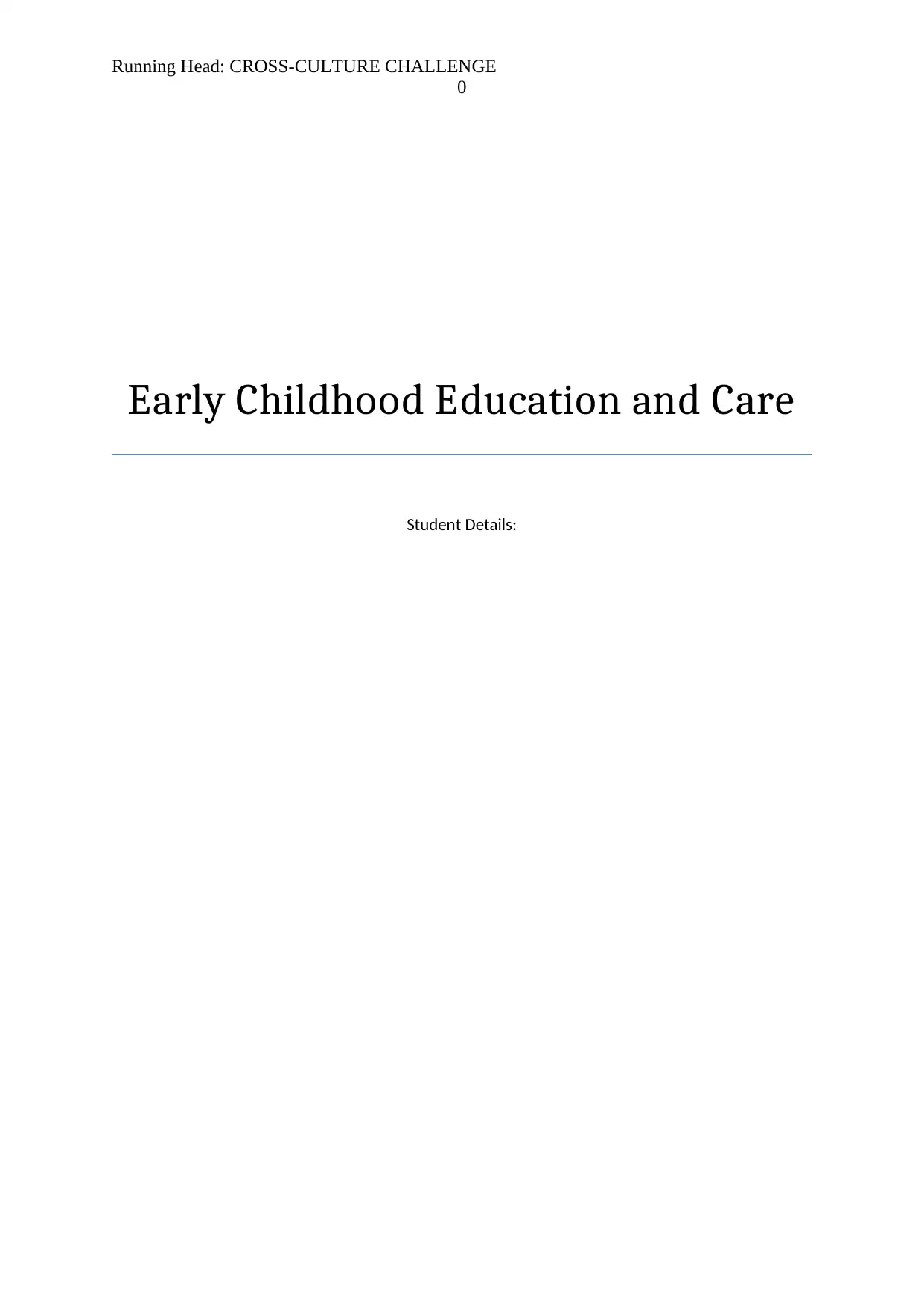
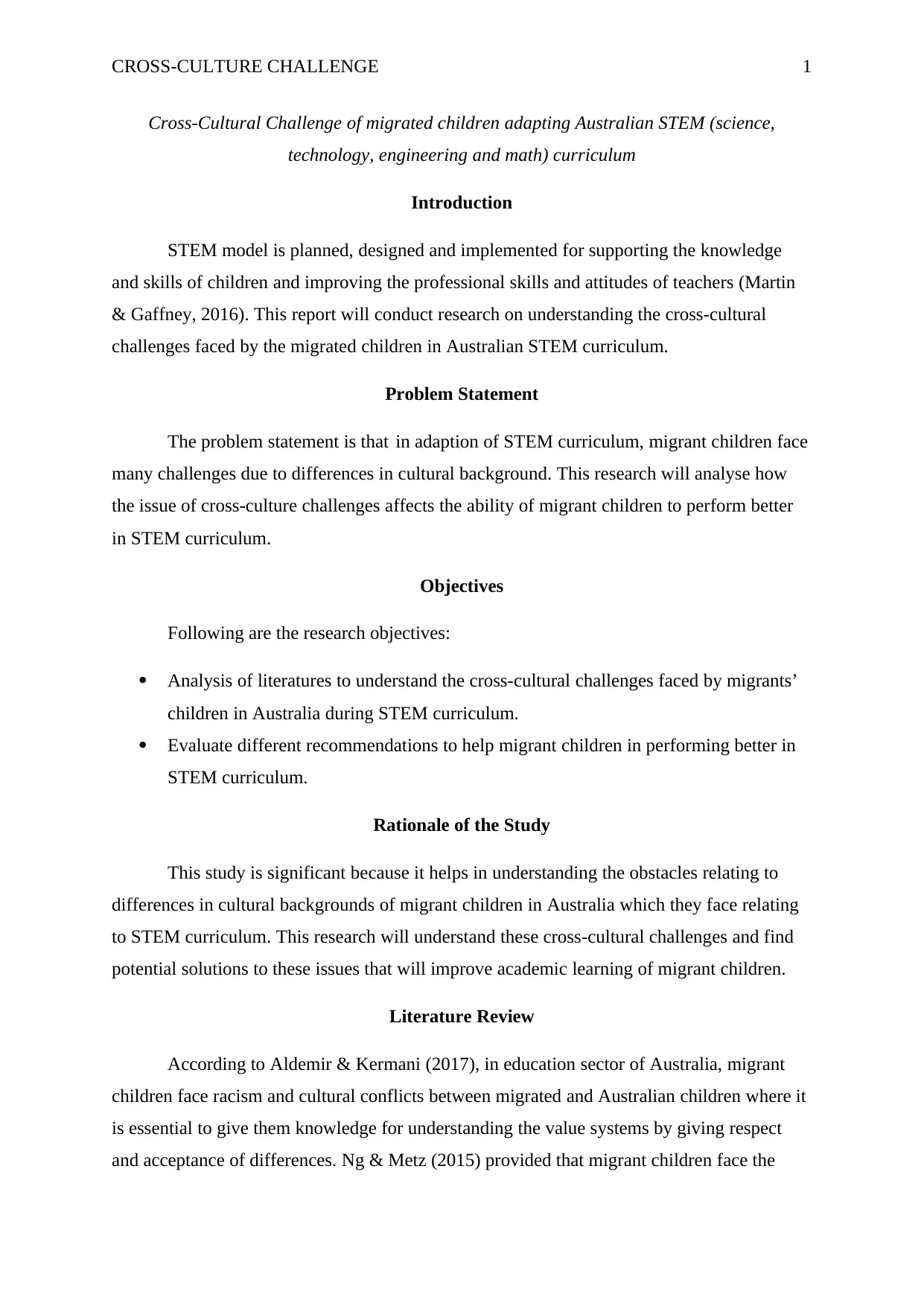
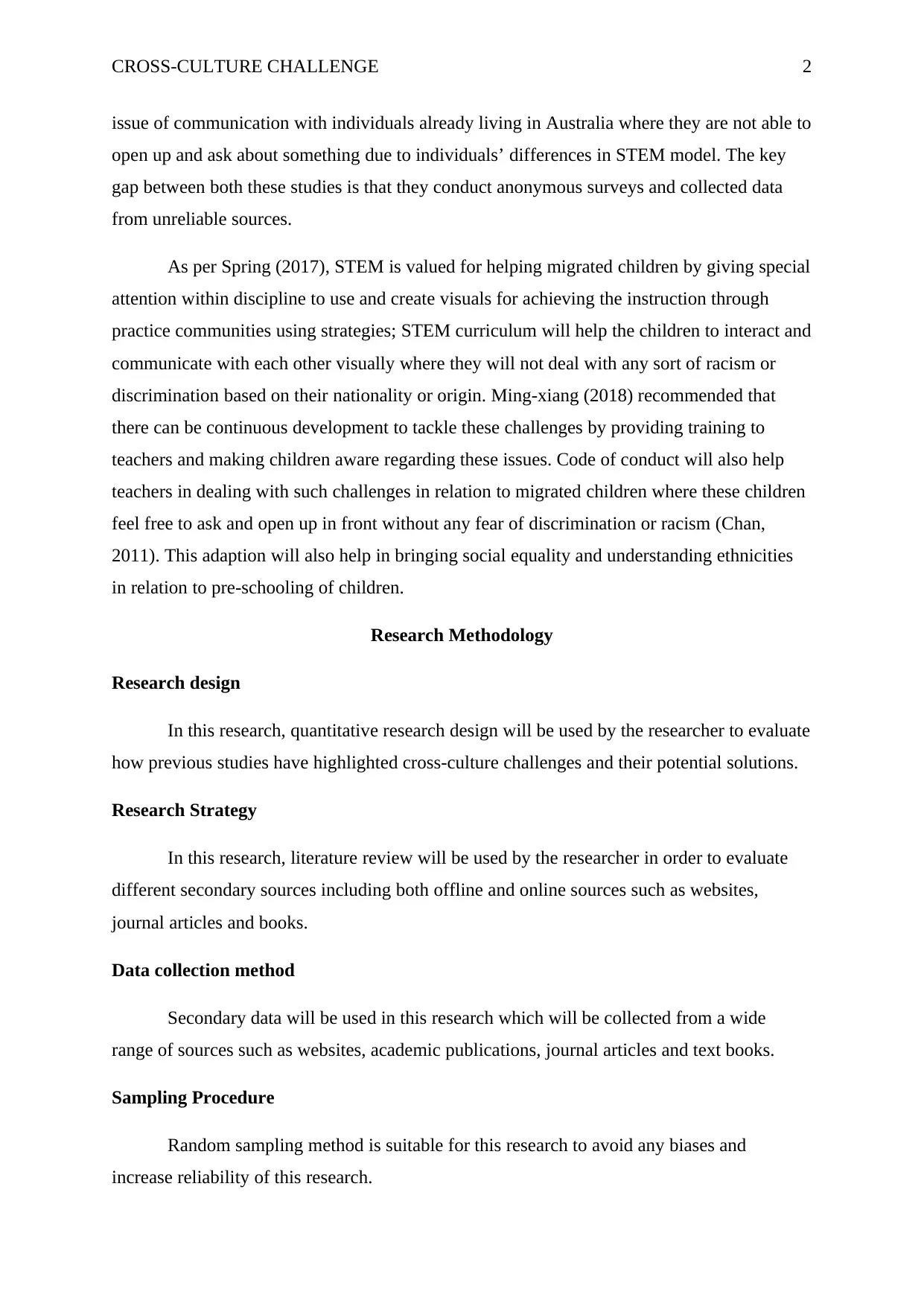

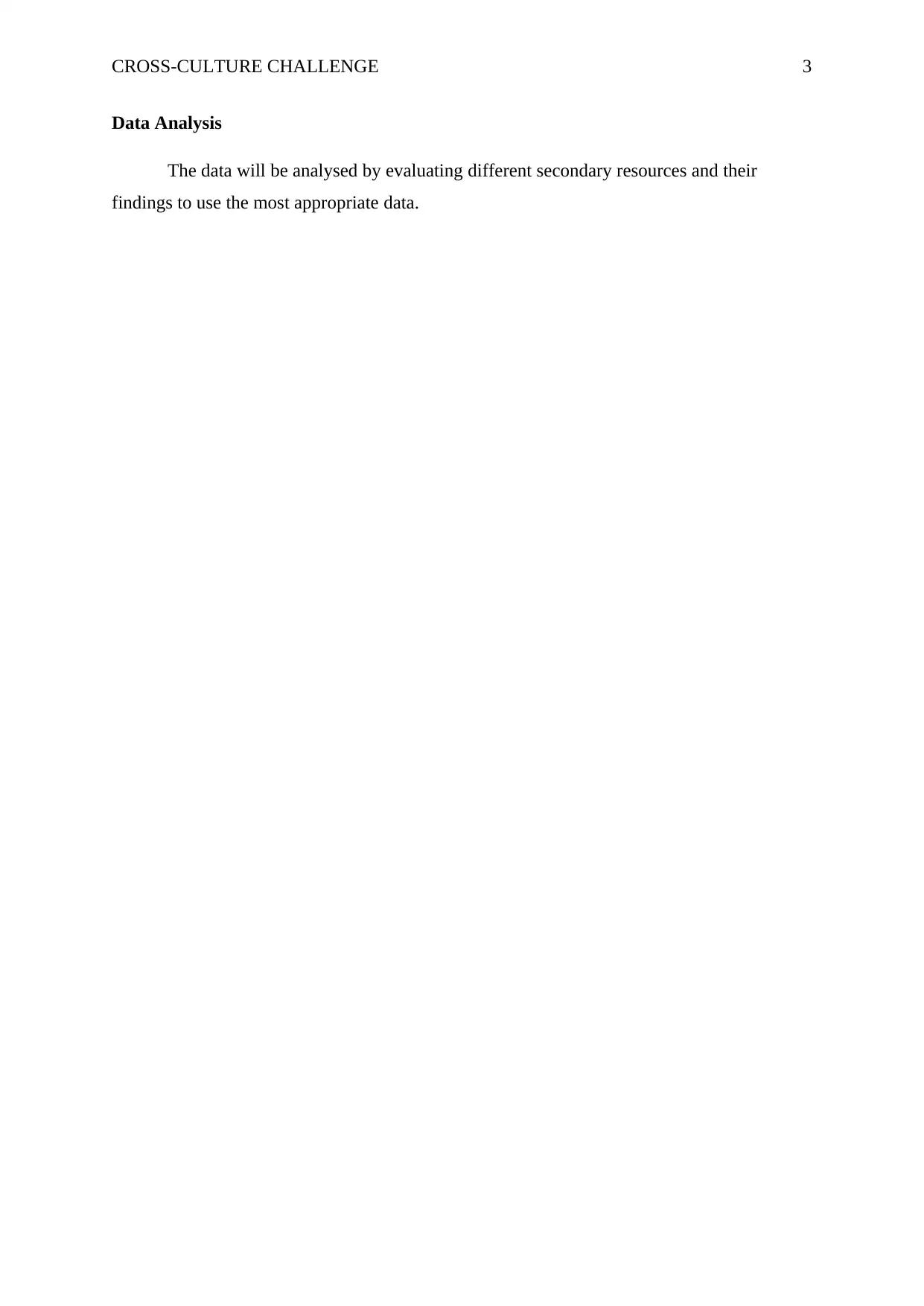
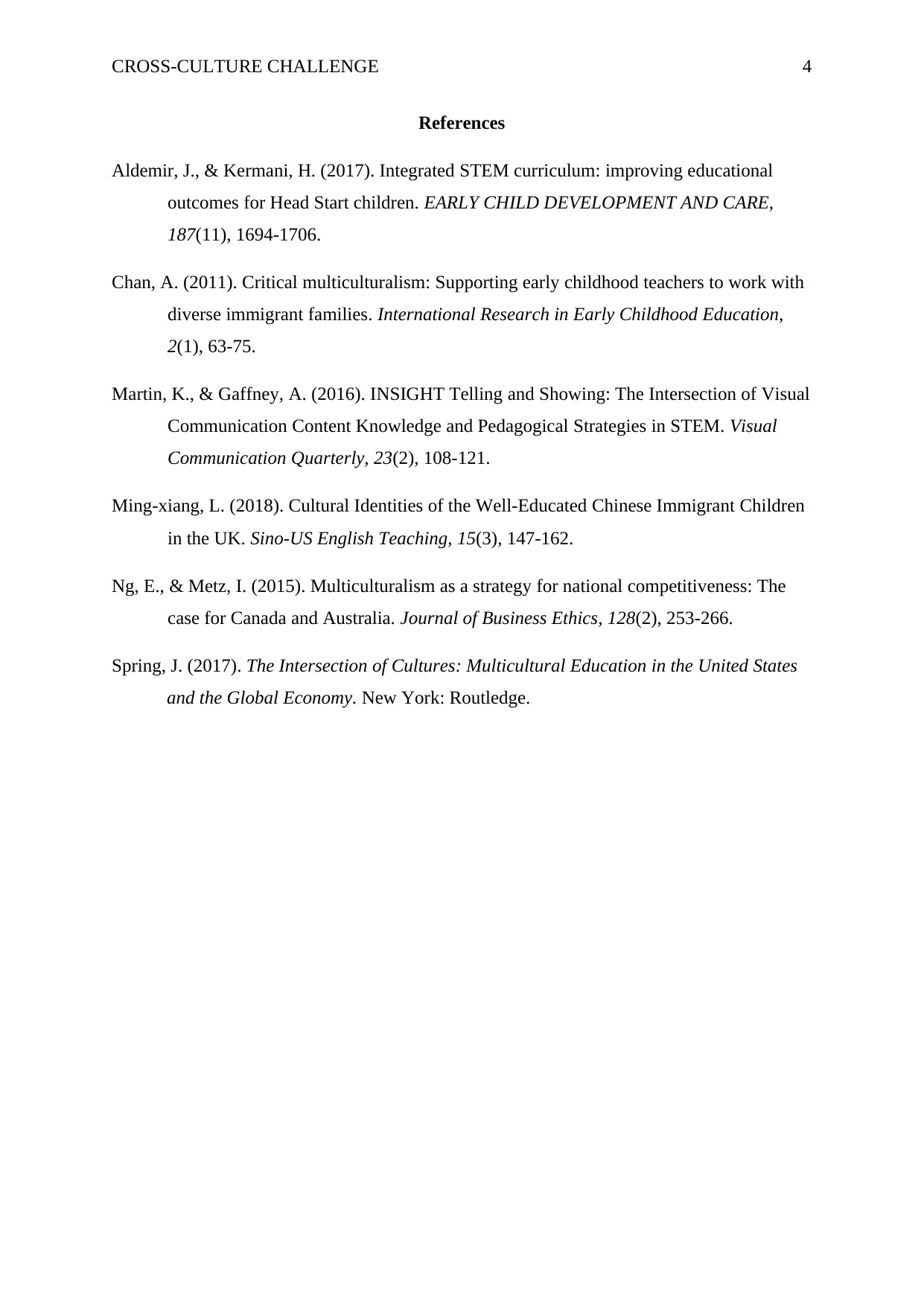






![[object Object]](/_next/static/media/star-bottom.7253800d.svg)